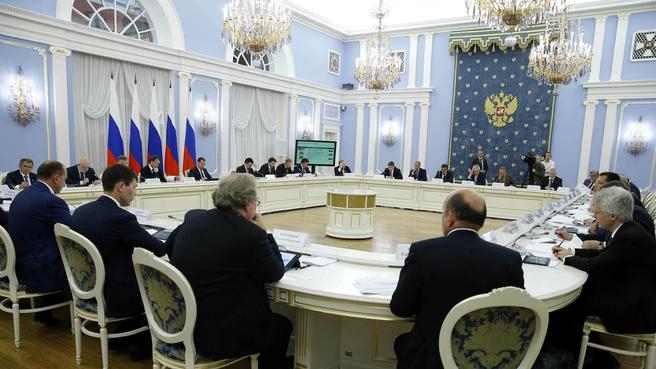Meeting of the Presidium of the Presidential Council for Economic Modernisation and Innovative Development.
Excerpts from Dmitry Medvedev’s opening remarks:
The
current meeting of the Presidium is devoted to new production technology. This
is not a new subject; I spoke about it at the Innoprom fair in Yekaterinburg in
July and at many other events.
We are talking about a set of technological and institutional methods that are changing the traditional views of production. They have to do with comprehensive introduction of IT-decisions throughout the entire production cycle: from design of a product to its disposal. This also applies to modern automated systems, robotics and additive manufacturing that allow 3D printing of both components and entire products based on a digital model.
This area is in the focus of attention all over the world. The European Union, the United States, Japan and China are the leaders of the market. We are also engaging with it and have attained certain achievements, primarily in mathematical modelling and development of new materials. However, the picture in production itself, the real sector economy, is not so bright. Russia accounted for less than one percent of the world’s industrial robotics in 2012.
Today we’ll discuss some decisions that would allow these areas to make faster progress. Thus, there is a proposal to elaborate a new model for introducing advanced technology. World practice shows that consortiums of organisations from different sectors are the most efficient in this respect. They are usually established for specific projects. They may include producers and users of technological solutions, including large companies with state participation, engineering companies, small and medium-sized business, and leading universities and research institutes. If possible, it makes sense to invite foreign partners that have the required experience. Considering the cross-sectoral nature of the issue, it is necessary to establish a common coordinating mechanism that could receive the status of a national technological initiative in production technology.
We must pool together the financial and organisational resources of the federal executive bodies, science and business. It has been suggested that new production technology be included into priority areas of science, technology and equipment, and on the list of so-called critical technology. Needless to say, development institutes should also pay special attention to this area, using the available funds.
One more important issue is to include new production technology into educational programmes. In this context I’m instructing the Ministry of Education and Science, in cooperation with the Ministry of Industry and Trade and the Ministry of Communications and Mass Media, to draft proposals on developing a system of cross-sectional education in the foundations of intellectual and IT technology, computer modelling, robotics, and additive technology.








